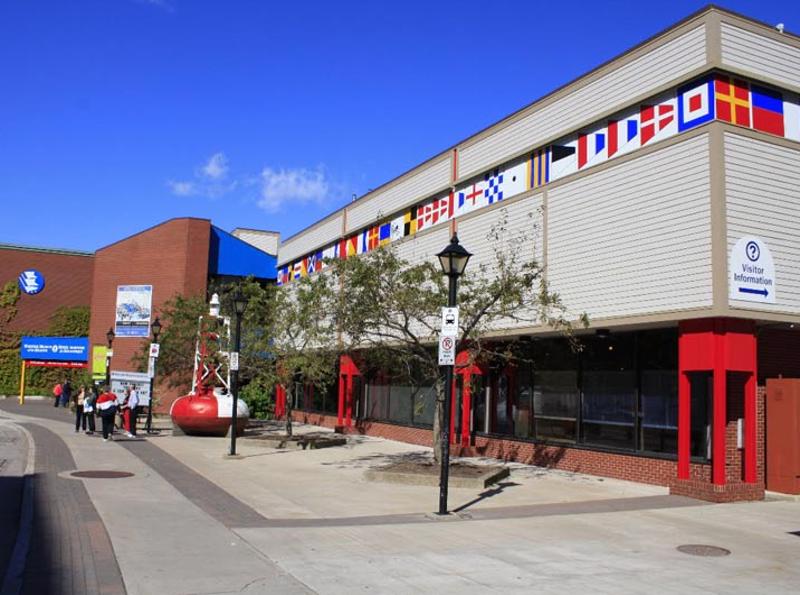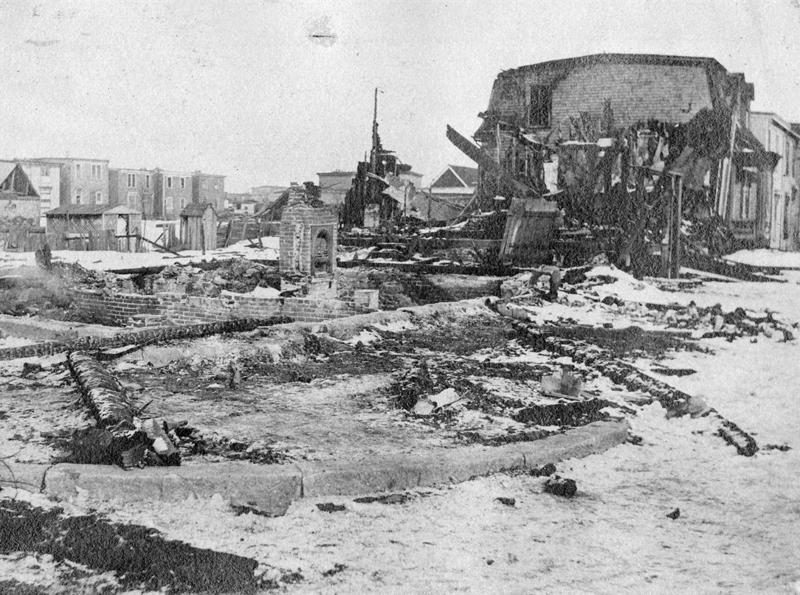2018 Adventures
Charlottetown to Halifax, NS Travel Distance: 55 km to the Ferry,
75 mins ferry ride,
165 km from Pictou to Halifax
AirBnB accommodations: $292.65 CAD for 3 nights (taxes, fees and cleaning fee inclusive)
We headed out about 8 am to head down to the ferry terminal. It took about 45 mins to get to the Wood Island Ferry Terminal. It had a surprising amount of people already lined up for the ferry. The ferry crossing took 75 mins to get from Wood Island to Pictou. Once arriving to Pictou it was another 165 km to Halifax, NS.
We were scheduled to check in to our place at 3 pm, so being that we were early we headed down to the Cruise Ship Terminal to check things out. There were 5 cruise ships in town and tons of action down at the Halifax Seaport. The Seaport has Pavillion 22 - Dockside Shops, Pier 21 - The Canadian Museum of Immigration, and the Halifax Farmers Market. Things were busy down at the Terminal with all passengers from the cruise ships.
We walked down the water front until we reached the Maritime Museum of the Atlantic. We found out that it if you come on a Tuesday from 530-8 pm, entrance to the museum is free. So we decided to head back to get settled and spend some time with Roxy before heading back out to visit the museum.
brenda stanger
104 chapters
16 Apr 2020
Nova Scotia - Halifax
Day 1 - Halifax
Charlottetown to Halifax, NS Travel Distance: 55 km to the Ferry,
75 mins ferry ride,
165 km from Pictou to Halifax
AirBnB accommodations: $292.65 CAD for 3 nights (taxes, fees and cleaning fee inclusive)
We headed out about 8 am to head down to the ferry terminal. It took about 45 mins to get to the Wood Island Ferry Terminal. It had a surprising amount of people already lined up for the ferry. The ferry crossing took 75 mins to get from Wood Island to Pictou. Once arriving to Pictou it was another 165 km to Halifax, NS.
We were scheduled to check in to our place at 3 pm, so being that we were early we headed down to the Cruise Ship Terminal to check things out. There were 5 cruise ships in town and tons of action down at the Halifax Seaport. The Seaport has Pavillion 22 - Dockside Shops, Pier 21 - The Canadian Museum of Immigration, and the Halifax Farmers Market. Things were busy down at the Terminal with all passengers from the cruise ships.
We walked down the water front until we reached the Maritime Museum of the Atlantic. We found out that it if you come on a Tuesday from 530-8 pm, entrance to the museum is free. So we decided to head back to get settled and spend some time with Roxy before heading back out to visit the museum.



Located in the heart of Halifax’s historic waterfront, there’s no better place to immerse yourself in Nova Scotia’s rich maritime heritage than the Maritime Museum of the Atlantic. The most prominent exhibits in the Museum are the "Titanic" and the exhibit on the Halifax Explosion.
The year was 1917 and Halifax, like the rest of the world, was fully embroiled in the First World War. Serving as the assembly and departure point for transatlantic convoys carrying supplies and soldiers to the war effort overseas, the small city was quickly evolving into a world class port and major base of naval operations.
Halifax was a hub of activity. Troops bound for battle swept in and out of the city, labourers flowed to and from work as the war created a significant industrial and residential boom, and children of all ages

wandered to their schools for lessons. In a time of war and devastation, Halifax was thriving.
That all changed the morning of December 6, 1917. Approximately six minutes after 9:00 am, a dreadful mis-communication between two ships in the harbour resulted in an Explosion of cataclysmic proportions. 2,000 people were killed and 9,000 more were injured. The city was reduced to ruins and debris.
The award-winning exhibit takes visitors through the time line of the event, establishing what life in the city was like and breaking down the unfortunate circumstances that caused the tragedy. Featuring personal effects and stories of those who both perished and survived, the exhibit explores the Explosion from an anecdotal perspective, giving visitors a sense of the devastation that occurred, but more importantly, a sense of the city’s bravery in the face of

adversity.
Halifax has survived times of war and tragedy. It is the people of the area that come together, each and every time, to support one another; making Halifax stronger and more united.
What an interesting day. Nova Scotia is a large island and we have only begun to experience all that it has to offer. Tomorrow we will continue on in our adventures and head further south down the island.

1.
Year of Travel
2.
Sosua - Dominican Republic
3.
Our Adventures So Far...
4.
Beach Life
5.
Our Favourite Restaurants in Sosua
6.
Fun with Friends
7.
Sosua Continued
8.
Sun, Surf and Sand
9.
Samana Peninsula
10.
Sosua Highlights
11.
USA Road Trip
12.
Texas
13.
Texas
14.
Louisiana - NOLA
15.
Louisiana - NOLA
16.
Louisiana - NOLA
17.
Alabama
18.
Alabama to Tennesse
19.
Tennesse - Nashville
20.
Tennesse - Nashville
21.
Tennesse - Nashville
22.
Tennesse - Memphis
23.
Tennesse - Memphis
24.
Tennesse - Memphis
25.
Summer at Home
26.
Westcoast Adventures
27.
Europe
28.
Europe - Budapest
29.
Europe - Budapest
30.
Europe - Vienna
31.
Europe - Vienna
32.
Europe - Vienna
33.
Europe - Prague
34.
Europe - Prague
35.
Europe - Prague
36.
Europe - Berlin
37.
Europe - Berlin
38.
Europe - Berlin
39.
Europe - Salzburg
40.
Europe - Salzburg
41.
Europe - Salzburg
42.
Europe - Salzburg
43.
Europe - Salzburg
44.
Europe - Innsbruck
45.
Europe - Innsbruck
46.
Europe - Bad Ragaz
47.
Europe - Bad Ragaz
48.
Europe - Lindau
49.
Europe - Lindau
50.
Europe - Fussen
51.
Europe - Fussen
52.
Europe - Freising and Munich
53.
San Francisco
54.
San Francisco
55.
San Francisco
56.
San Francisco
57.
San Francisco
58.
San Francisco
59.
Canada Road Trip
60.
On the Road to Ontario
61.
Ontario - Thunderbay
62.
Ontario - Thunderbay
63.
Ontario - Thunderbay
64.
Ontario - Toronto
65.
Ontario - Ottawa
66.
Ontario - Ottawa
67.
Quebec - Montreal
68.
Quebec - Montreal
69.
Quebec - Montreal
70.
Quebec - Quebec City
71.
Quebec - Quebec City
72.
Quebec - Sainte Flavie
73.
New Brunswick - Bathurst
74.
New Brunswick - Shediac
75.
New Brunswick - Shediac
76.
Prince Edward Island - Charlottetown
77.
Prince Edward Island - Road trip
78.
Prince Edward Island - Charlottetown
79.
Prince Edward Island - More exploration
80.
Nova Scotia - Halifax
81.
Nova Scotia - Halifax
82.
Nova Scotia - Halifax
83.
Nova Scotia - Sydney
84.
Newfoundland - Channel-Port
85.
Newfoundland - Rocky Harbour
86.
Newfoundland - Rocky Harbour
87.
Newfoundland - St. John's
88.
Newfoundland - St. John's
89.
Newfoundland - St. John's
90.
Newfoundland - St. John's
91.
Newfoundland - St. John's
92.
Newfoundland - Travelling
93.
Nova Scotia - Sydney
94.
New Brunswick - Saint John
95.
Maine - Portland
96.
Massachessets - Cape Cod via Boston
97.
Massachusetts - Cape Cod
98.
Massachusetts - Cape Cod
99.
Pennsylvania - Clearfield
100.
Illinois - Chicago
101.
Illinois - Chicago
102.
Illinois - Chicago
103.
Heading Home
104.
Our Year at a Glance
Share your travel adventures like this!
Create your own travel blog in one step
Share with friends and family to follow your journey
Easy set up, no technical knowledge needed and unlimited storage!
© 2025 Travel Diaries. All rights reserved.